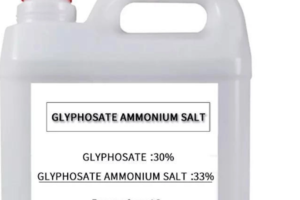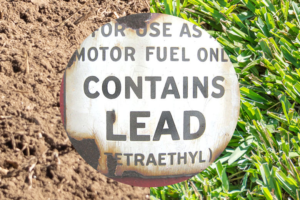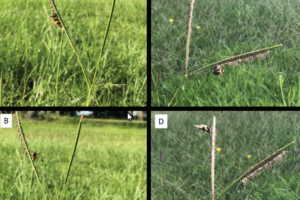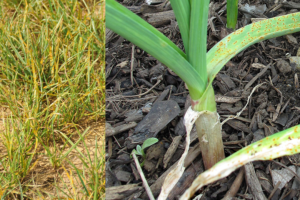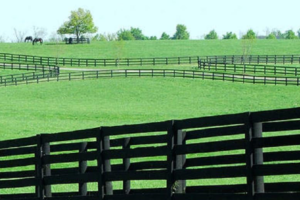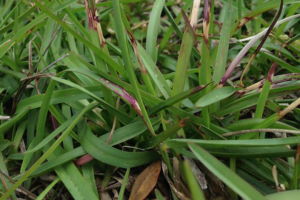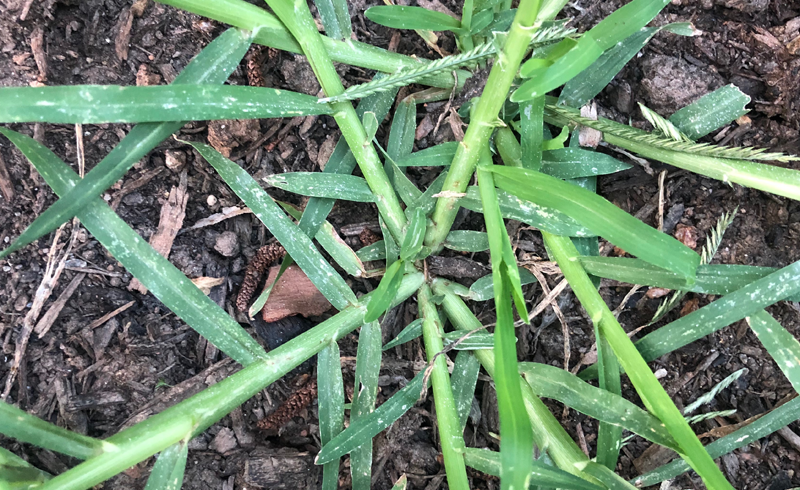
The Need for Healthy Soils
Every gardener dreams of lush, vibrant gardens. The foundation of these dreams? Healthy soil. Soil is the lifeblood of any garden, providing plants with the nutrients they need to thrive. However, not all soils are created equal. Some can be too sandy, too clayey, or, in some cases, have too much of certain minerals, like iron.
For the average gardener, understanding soil might seem like a complex task. But it’s simpler than you think. Imagine soil as a multi-layered cake. Each layer has ingredients; you need the right balance for the cake to taste good. Similarly, the soil needs the right balance of nutrients for plants to grow well.
Challenges with Iron-rich Soils
Iron is like the chocolate chips in our garden cake. While chocolate chips are delicious, too many can overpower the cake. Similarly, while iron is essential for plants, too much can be problematic. Plants might show signs of stress, like yellowing leaves.
But here’s the good news: Nature has its way of balancing things out. Just like adding frosting can balance the extra chocolate chips in a cake, certain plants can help balance the extra iron in the soil. One such plant hero is the goosegrass. This common plant, often seen in yards and open spaces, is the solution gardeners seek.
This introduction sets the stage for understanding the importance of soil health and introduces the reader to the potential of goosegrass in addressing soil challenges. As we delve deeper, we’ll uncover the magic of goosegrass and how it can be a game-changer for gardens with iron-rich soils.
Why Iron Matters in Soil
The Role of Iron in Plant Growth
Essential for Many Plant Functions Iron, though a tiny component in soil, plays a significant role in keeping plants healthy. Think of iron as a vitamin for plants. Just as we need vitamins to keep our bodies functioning, plants need iron to grow strong and vibrant. It helps them produce chlorophyll, essential for photosynthesis – the process plants use to turn sunlight into food.
For gardeners, ensuring the right amount of iron in the soil can lead to lush, green plants. When plants have enough iron, they can efficiently produce their food, leading to better growth, more flowers, and a healthier garden overall.
Signs of Iron Imbalance However, like all good things, balance is critical. Too little iron and plants might look pale and weak. Their leaves might turn yellow, especially between the veins, a condition known as iron chlorosis. On the flip side, too much iron can also be a problem, making it hard for plants to absorb other essential nutrients.
For landscapers and gardeners, recognizing these signs is crucial. It helps in diagnosing soil problems early on and taking corrective measures. The beauty of nature is that it often provides solutions to such challenges. In the case of iron imbalances, the solution might just be growing in your backyard – the humble goosegrass. By understanding the role of iron and recognizing signs of imbalance, gardeners can make informed decisions to ensure their plants thrive.
Using Plants to Fix Soil Problems
Nature’s Solution to Soil Challenges
Plants as Natural Soil Healers Nature has a fantastic way of self-healing, and plants play a central role in this process. Just as we use certain plants like aloe vera to soothe skin burns, the earth uses specific plants to heal and rejuvenate its soils. These plants, often termed ‘pioneer plants,’ can grow in challenging conditions, gradually improving soil health.
For gardeners, this is a revelation. Instead of relying heavily on chemical treatments to fix soil problems, turning to nature’s toolkit can be practical and eco-friendly. By planting the right kind of plants, gardeners can naturally enhance soil health, ensuring a thriving garden in the long run.
The Concept of Phytoremediation Phytoremediation might sound technical, but it’s simple. It’s all about using plants to clean up soils. Some plants can take up harmful substances from the soil, either storing or transforming them into less harmful forms.
Landscapers can harness this natural ability to address various soil challenges. For instance, if a patch of land has too much iron or other minerals, planting certain types of plants can help balance things out. And one such wonder plant, as we’ve discovered, is goosegrass. This common plant, often overlooked, can be a gardener’s ally in creating a balanced, healthy garden.
The Magic of Goosegrass
A Common Plant with Uncommon Abilities
Goosegrass in Everyday Gardens
Goosegrass, often seen as a simple weed, is more than meets the eye. Many gardeners might have encountered this plant with its slender green leaves and characteristic seed heads. While it’s easy to dismiss goosegrass as just another garden intruder, this plant has some hidden talents that can be a boon for gardeners.
For starters, goosegrass is a hardy plant. It can grow in various soil conditions, making it a versatile addition to any garden. But its real magic lies in its ability to interact with the soil, especially soils that have an imbalance of certain minerals, like iron.
Balancing Iron Levels Naturally
As we’ve learned, too much iron in the soil can be a problem for many plants. But goosegrass has a unique ability to take up excess iron from the soil. Gardeners can naturally balance the iron levels by allowing goosegrass to grow in areas with iron-rich soils.
But it’s not just about iron. Goosegrass has a broader role in improving soil health. Its roots can help aerate the soil, allowing for better water penetration. Moreover, as the plant decays, it adds organic matter to the soil, further enhancing its quality.
In essence, goosegrass is like a natural soil conditioner. Instead of spending on expensive soil treatments, gardeners can harness the power of goosegrass to improve their garden’s soil health naturally. It’s a testament to nature’s wisdom, where even the most common plants can have extraordinary benefits.
How the Study Worked
Setting the Stage for Discovery
Choosing the Right Location Every good study begins with selecting the right location, which was no different. Researchers picked a specific area known for its iron-rich soils. For the average gardener, this might be akin to choosing a patch in your backyard that has always given you trouble. By focusing on such challenging areas, the study aimed to test goosegrass’s abilities truly.
The location was not just chosen for its soil type but also for its natural environment. Ensuring the conditions are as close to a typical garden as possible is essential. This way, the study findings would be directly relevant to gardeners and landscapers everywhere.
The Experiment Design Once the location was set, the next step was to design the experiment. Think of this as planning a new garden layout. Researchers planted goosegrass in specific plots, while others were left as controls without the plant. This setup allowed them to compare the soil’s health and quality over time.
Like gardeners might try different plants in various parts of their garden to see what works best, the researchers monitored the plots to observe any changes. They looked at how goosegrass affected the soil’s iron levels and other essential parameters that indicate soil health.
By the end of the study, the results were precise. The plots with goosegrass showed significant improvements in soil quality compared to the control plots. It was a win for nature’s ability to heal and rejuvenate.
What the Study Found
Unveiling the Benefits of Goosegrass
Natural Soil Improvement
One of the most exciting findings from the study was the natural improvement of soil where goosegrass was present. For gardeners, this is like discovering a plant that looks good in your garden and helps other plants around it thrive. The plots with goosegrass showed a noticeable reduction in excess iron levels. This means the plant actively took up the excess iron, helping balance the soil’s mineral content.
Moreover, the presence of goosegrass led to better soil aeration. Just like earthworms can improve soil structure by creating channels, the roots of goosegrass play a similar role. Better aeration means water can penetrate the soil more efficiently, ensuring plants get the needed moisture.
Boosting Overall Soil Health
But the benefits didn’t stop at iron regulation and aeration. The plots with goosegrass also showed an increase in organic matter. Organic matter is like the soil food; it provides essential nutrients and improves soil structure. For landscapers, this means a richer, more fertile ground supporting a wider variety of plants.
Additionally, the study found that soils with goosegrass had a healthier microbial community. These tiny organisms play a massive role in breaking down organic matter and making nutrients available to plants. In essence, goosegrass was helping the soil directly and supporting these beneficial microbes.
Conclusion
Embracing Nature’s Wisdom
The Power of a Simple Plant
It’s often said that nature holds the answers to many of our problems, and this study reaffirms that belief. Goosegrass, a plant many might overlook or even consider a nuisance, has proven to be a hidden gem for gardeners. Its ability to naturally regulate iron levels in the soil, improve aeration, and boost overall soil health is remarkable.
For gardeners and landscapers, this discovery is a reminder of the importance of understanding and working with nature. Instead of resorting to chemical treatments or other interventions, sometimes the solution lies in the plants themselves. One can harness its benefits and create a more vibrant and healthy garden by incorporating goosegrass into gardens, especially those with iron-rich soils.
Looking Forward with Optimism
The findings of this study are not just academic; they have practical implications for every gardener and landscaper. As we move towards more sustainable and eco-friendly gardening practices, plants like goosegrass will play a pivotal role. They offer a natural way to address soil challenges, reducing the need for external interventions.
Moreover, this study serves as an inspiration to explore and understand the myriad plants around us. Each plant, no matter how common or obscure, has its unique set of benefits. By embracing this diversity and learning from nature, we can create gardens that are not only beautiful but also ecologically balanced and thriving.
Ikhajiagbe, B., Chukwujama, C. A., & Ogwu, M. (2022). Intrinsic restoration of a ferruginous ultisol using goosegrass (Eleusine indica L. [Gaertn.]) obtained from different land use areas.JNRD – Journal of Natural Resources and Development,12, 1–18. https://doi.org/10.18716/ojs/jnrd/2022.12.01

Bob Green, a passionate lawn care enthusiast with over two decades of landscaping experience, is this website’s proud owner. His vast knowledge of horticulture and dedication to helping homeowners maintain beautiful lawns are reflected in the valuable content he shares on his platform. John has always been interested in Agrostology.









